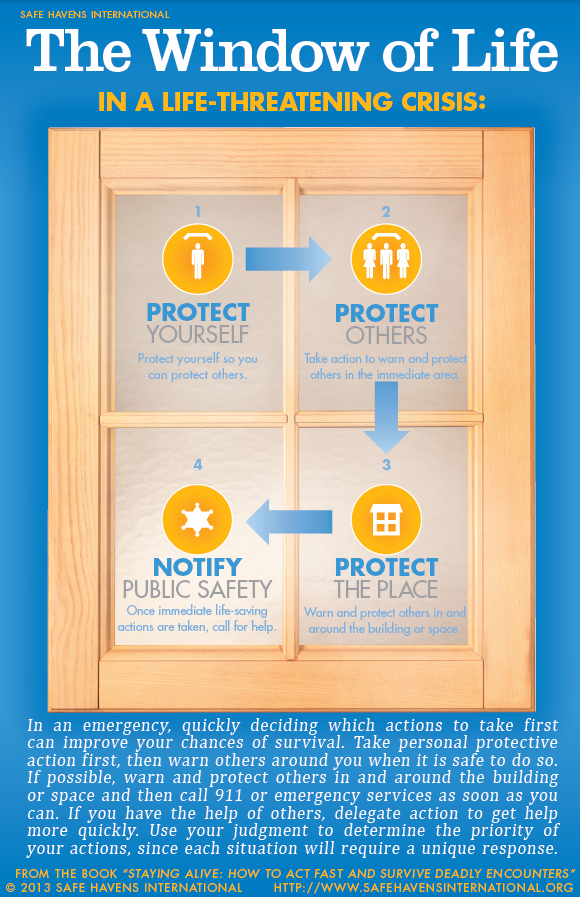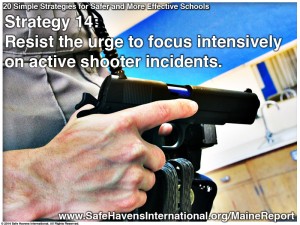Ver a continuación traducción de este artículo al español.
On Wednesday, January 18th word quickly spread of the sad tragedy unfolding in the city of Monterrey, Mexico at Colegio Americano del Noreste (the American School of the Northeast), a bilingual private school. According to media reports, a 15-year old male student used a .22 caliber handgun to open fire on his classroom. He severely wounded four and quickly took his own life. Three of the victims (a teacher and two students) were shot in the head and are in serious condition. The fourth victim was shot in the arm.
Much as we see in the US after events such as these unfold, there is a lot of speculation and there have been expressions of anger by the public. Blame is placed, and claims are made that this sort of phenomenon is new and the result of some social evil. The terrible fact is that these types of events have happened throughout modern history and in countries in most parts of the world. In a region where drug and gang violence is typically the biggest threat, what is shocking to many people in Mexico is that the incident involved a student attacker inside a school and that it resulted in a suicide.
Though school shootings are rare in Mexico they are not unheard of. Instances of shootings inside of school buildings are not commonly reported in the media. However, there has been enough drug and gang-related violence to push schools in northern Mexico to develop “duck and cover” procedures to protect against stray bullets. As with many of the active-shooter focused planning models in the U.S., such a focus on a single type of incident can mean that training might fall short when it comes to other types of incidents such as hostage situations and suicides.
We know that school shootings may occur in public, private or charter schools in any community across the globe. At the same time, due to a lack of funding, awareness or interest many schools still lack effective prevention measures.
It has been suggested, though not confirmed, that the shooter suffered from depression for which he was receiving treatment. Some are asking whether or not bullying played a role in the matter. As there is no exact Spanish translation for the English word bullying, many Mexicans use the English version (pronounced “boo-leeeng”). Some use Spanglish verbs like “buleando.” This lack of cultural awareness creates additional challenges for a problem that has had considerable media attention in the U.S. over the past few decades. Our analysts have seen this as a dynamic in many of the countries we have worked in such as Vietnam, Bolivia, South Africa and India.
In 2014 a 12-year-old Tamaulipas boy died of injuries sustained in a beating by classmates after being grabbed by a group of young assailants and flung against a wall. Published reports claim that the boy had complained to his teacher about being bullied but was ignored. Like any other school tragedy, we must exercise caution when our primary source of information involves media reports. This tragedy made national headlines and hundreds of people held a demonstration demanding justice for the boy’s death. Supporters started a Twitter campaign with the hashtag #ElBullyingNoEsUnJuego (“Bullying is not a game”).
Mexico’s human rights commission announced that it would work with teachers as part of a national campaign to tackle bullying. Like many programs and initiatives in the United States, it is unclear how effective these measures have been. In the hours following the event, alleged CCTV video of the event has been shared and gone viral on the internet and television around the world. This video is graphic and shows the entire event and will disturb most viewers. This is another factor that has been seen in other shootings in the United States and elsewhere. State security spokesman Aldo Fasci has been quoted saying that those responsible for posting photographs of the shooting on social media would be punished. He also asked of the news media to avoid using the images, which show minors.
While school violence is not a new problem, and will probably always exist in some form, we can still work to reduce risk and improve our response during a crisis. Students and staff can benefit from practical and understandable information that can help them increase their chances of survival in a variety of crisis situations. One tool that can be useful in situations like this one is a procedure known as a “Room Clear”. Schools can practice a room-clear protocol in any event where students need to quickly remove themselves from their current location and find safety elsewhere. This could be a hostage situation or suicide scenario like this one, or it could be used for something more mundane like a utility failure or medical emergency.
“Why is a Room Clear Protocol Important?” from Ask Safe Havens video web series:
“¿Por qué es importante un protocolo de “Room Clear” de Ask Safe Havens
Here is another simple concept that can be helpful for schools and teachers responding to a crisis: The Window of Life (Available as a free download on our “Staying Alive” resources page)
Aquí hay otro concepto simple que puede ser útil para las escuelas y los profesores que responden a una crisis: “La ventana de la vida” (Disponible como descarga gratuita en nuestra página de recursos “Staying Alive”)

The Window of Life is a tool to help school employees reduce danger to themselves and others in a school crisis situation. The Window of Life is especially important for active shooter incidents where calling 911 before communicating the need for a lockdown can cause a lengthy delay in taking protective actions that can save lives while law enforcement officers are on the way – even when officers are assigned to the campus where the attack is taking place.
Safe Havens staff on using the Window of Life concept:
Tiroteo Escolar en Monterrey México: Primeras Impresiones
20 DE ENERO DE 2017 (Autora) RACHEL WILSON
El miércoles 18 de Enero se difundió rápidamente la triste noticia de la tragedia que estaba ocurriendo en la ciudad de Monterrey, México, en el Colegio Americano del Noreste, una escuela privada bilingüe. Según reportes de la prensa, un estudiante de 15 años utilizó una pistola calibre .22 para abrir fuego en su aula. Hirió de gravedad a cuatro personas e imediatamente se quitó la vida. Tres de las víctimas (una maestra y dos estudiantes) recibieron un disparo en la cabeza y se encuentran en estado grave. La cuarta víctima recibió un disparo en el brazo.
Tanto así como vemos en los EE.UU. después de acontecimentos como éste, hay mucha especulación y ha habido expresiones de enojo por parte del público. Se culpan unos a otros , y se afirma que este tipo de fenómeno es nuevo y el resultado de algún mal social. Lo terrible es el hecho que éste tipo de eventos han ocurrido a través de la historia moderna y en países en la mayor parte del mundo. En una región donde la violencia de las drogas y las pandillas es típicamente la mayor amenaza, lo que más conmociona a muchas personas en México es que el incidente involucró a un estudiante que atacó a sus compañeros y maestra dentro de una escuela y que resultó en un suicidio.
Aunque los disparos en las escuelas son raros en México no son inauditos. Los casos de disparos dentro de los edificios escolares no son comúnmente reportados en los medios de comunicación. Sin embargo, ha habido suficiente violencia relacionada con las drogas y las pandillas para empujar a las escuelas del norte de México a desarrollar procedimientos de “duck and cover” (agacharse y cúbrirse) para protegerse contra las balas perdidas. Al igual que ocurre con muchos de los modelos de planificación centrados en los tiradores activos en los Estados Unidos, tal enfoque en un solo tipo de incidente puede significar que el entrenamiento puede quedar corto cuando se trata de otros tipos de incidentes como situaciones de rehenes y suicidios.
Sabemos que los tiroteos en las escuelas pueden ocurrir en escuelas públicas, privadas o charter en cualquier comunidad en todo el mundo. Al mismo tiempo, debido a la falta de financiación, la concienciación o el interés de muchas escuelas aún carecen de medidas de prevención eficaces.
Se ha sugerido, aunque no confirmado, que el tirador sufría de depresión por la cual estaba recibiendo tratamiento. Algunos están preguntando si la intimidación (Bullying) jugó un parte en el asunto. Como no hay una traducción exacta al Español de la palabra inglesa bullying, muchos Mexicanos usan la versión en Inglés (pronunciada “boo-leeeng”). Algunos utilizan verbos spanglish como “buleando”. Esta falta de conciencia cultural crea desafíos adicionales para un problema que ha tenido una atención mediática considerable en los EE.UU. en las últimas décadas. Nuestros analistas han visto esto como una dinámica en muchos de los países en los que hemos trabajado, como Vietnam, Bolivia, Sudáfrica e India.
En 2014 un niño de 12 años de edad, Tampiqueño murió de heridas sufridas en una paliza por compañeros de clase después de ser agarrado por un grupo de jóvenes asaltantes y arrojado contra una pared. Informes publicados afirman que el muchacho se había quejado acerca de ser intimidado pero fue ignorado. Como cualquier otra tragedia de la escuela, debemos ser cautelosos cuando nuestra fuente primaria de información involucra reportes de los medios de comunicación. Esta tragedia hizo titulares nacionales y cientos de personas realizaron una manifestación exigiendo justicia por la muerte del niño. Los partidarios comenzaron una campaña de Twitter con el hashtag #ElBullyingNoEsUnJuego.
La comisión de derechos humanos de México anunció que trabajaría con los maestros como parte de una campaña nacional para combatir el acoso. Al igual que muchos programas e iniciativas en los Estados Unidos, no está claro cuán efectivas han sido estas medidas. En las horas posteriores al evento, el video de la CCTV del evento fue compartido por la red y en las noticias y se ha vuelto viral por todo el mundo. Este video es gráfico y muestra todo el evento y perturbará a la mayoría de los espectadores. Este es otro factor que se ha visto en otros tiroteos en los Estados Unidos y en otros lugares. El portavoz de seguridad estatal Aldo Fasci fue citado diciendo que los responsables de publicar fotografías de los disparos en las redes sociales serían castigados. También pidió a los medios de comunicación evitar el uso de las imágenes, que muestran a menores de edad.
Aunque la violencia escolar no es un problema nuevo, y probablemente siempre existirá de alguna forma, todavía podemos trabajar para reducir el riesgo y mejorar nuestra respuesta durante una crisis. Los estudiantes y el personal pueden beneficiarse de información práctica y comprensible que puede ayudarles a aumentar sus posibilidades de supervivencia en una variedad de situaciones de crisis. Una herramienta que puede ser útil en situaciones como esta es un procedimiento conocido como “Room Clear” (Aula vacía). Las escuelas pueden practicar un protocolo “Room Clear” en cualquier evento donde los estudiantes necesitan retirarse rápidamente de su ubicación actual y encontrar seguridad en otro lugar. Esto podría ser una situación de rehenes o un escenario de suicidio como éste, o podría ser utilizado para algo más mundano como un fracaso de servicios públicos o una emergencia médica.
